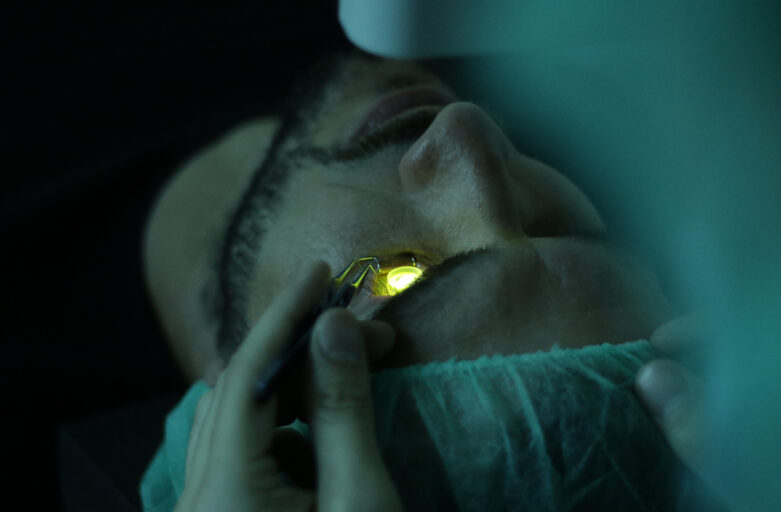Known as “The Keratoconus Guru,” Dr. Brian Boxer Wachler is the author of three books about keratoconus. Throughout his career, he has pioneered advancements in the field of ophthalmology to better treat his patients diagnosed with this debilitating condition. In this blog, he explains how two of the best procedures — Intacs and corneal cross-linking — can help people with keratoconus to lead much better lives.
Intacs®
Intacs are clear arc-shaped inserts placed in the cornea. They effectively flatten the bulge created by keratoconus.
Prior to placing Intacs Dr. Brian numbs the eye. He then makes a tiny opening in the cornea through which he inserts the Intacs. The procedure is quick and painless, and most patients notice a significant improvement in their vision. Although some amount of distortion may remain, this can usually be corrected with contact lenses and (in some cases) eyeglasses.
Epi-On Corneal Cross-Linking
Epi-on corneal cross-linking is a non-invasive procedure designed to strengthen the cornea. First, riboflavin (vitamin B2) drops are placed into the eye. Next, Dr. Brian shines a special ultraviolet light onto the eye. This process generates new corneal collagen cross-links, in turn making the cornea stiffer and sturdier.
Dr. Brian invented a proprietary formulation known as Holcomb C3-R® corneal cross-linking. He has been performing this FDA-approved, customized procedure since 2003, achieving great outcomes for his keratoconus patients.
This treatment slows — if not outright halts — the progressive bulging that accompanies keratoconus. By stopping keratoconus in its tracks, cross-linking preserves vision in 99.3% of cases.
Many patients are treated with both cross-linking and Intacs to maximize the impact.
What Happens When Keratoconus Goes Untreated
Allowing keratoconus to go untreated can have serious consequences, including permanent vision loss. With today’s treatments, it is much easier to stop keratoconus than to reverse it. Patients who seek prompt treatment for the condition can preserve vision as well as quality of life.
How Quality of Life Improves with Treatment
Having impaired vision impacts people’s lives in a myriad of ways. Everyday activities like reading, cooking and driving become significantly more difficult, if not impossible. Many people with vision impairment become less social because they cannot go watch a movie or play a game of tennis with a friend. They may also have trouble attaining employment if they cannot see well enough to do a job.
Life is not only easier, but also better when vision is preserved. The reasons that people with keratoconus seek Intacs and corneal-crosslinking treatment are endless.
Speak to the Expert
Dr. Brian has earned a reputation as the “The Surgeon’s Surgeon” because he so often treats other eye doctors. To make an appointment at Boxer Wachler Vision Institute, please call 310-860-1900.



